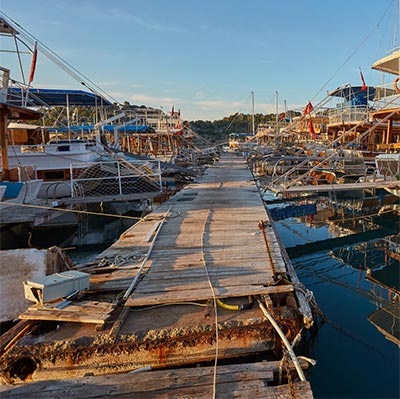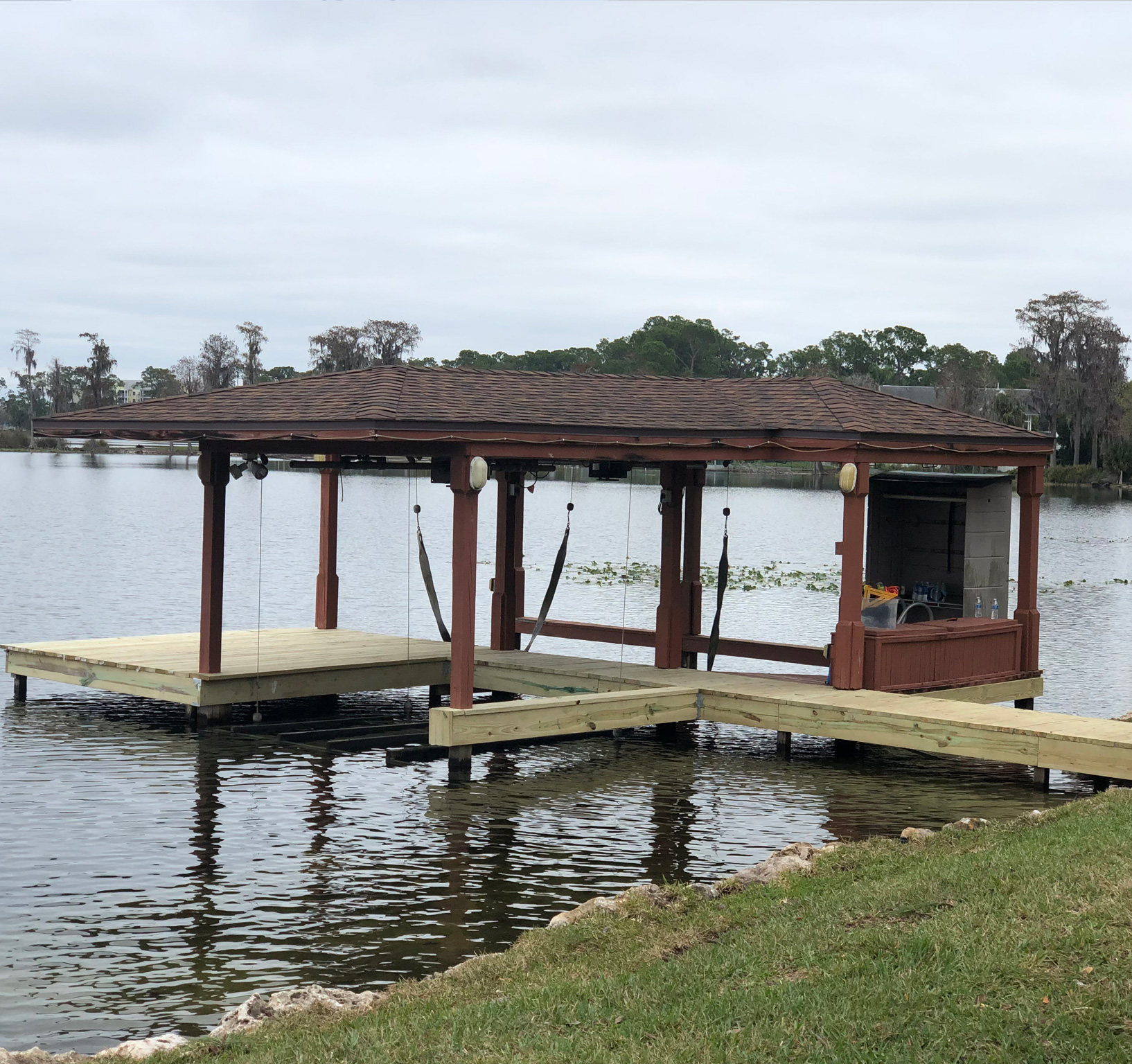Important Guide to Budget Friendly Dock Repairs for Homeowners
Important Guide to Budget Friendly Dock Repairs for Homeowners
Blog Article
Reliable Dock Fixing Techniques: Guaranteeing Structural Honesty
Making certain the structural integrity of docks via efficient fixing methods is extremely important for the long life and safety and security of marine centers. This includes a multi-faceted approach beginning with extensive assessments using innovative innovations like finder devices and from another location operated lorries (ROVs) to spot both visible and concealed damages. Subsequently, choosing the best repair work products, such as corrosion-resistant alloys and composite materials, is crucial for durability. Structural reinforcement approaches, consisting of the execution of cross-bracing systems and load-distribution plates, play an essential duty in mitigating anxiety points. The significance of these techniques ends up being noticeable when checking out sophisticated fixing methods and preventative maintenance strategies.
Analyzing Dock Damage
Analyzing dock damage is an important very first action in making sure the structural stability and safety of any kind of docking center. Trick elements to examine consist of the dock's structure, pilings, outdoor decking, and hardware (Dock Repairs).
Architectural engineers or certified inspectors typically execute these evaluations making use of specialized strategies and devices. For circumstances, undersea evaluations might employ finder equipment or remotely ran vehicles (ROVs) to detect immersed damages. Above water, aesthetic examinations are complemented by utilizing moisture meters and various other diagnostic devices to reveal underlying problems not right away visible to the naked eye.

Deciding On Repair Work Products
Choosing the proper repair service products is a crucial action in the dock remediation process, one that straight affects the longevity and efficiency of the repaired structure. Product selection should be driven by aspects such as ecological conditions, load-bearing demands, and compatibility with existing dock components. As an example, wood is a conventional selection for anchors as a result of its natural durability and visual allure. Choosing the best kind of wood, such as pressure-treated lumber or normally rot-resistant types like cedar or teak wood, is critical to withstand water settings.
Along with timber, composite materials are increasingly prominent because of their longevity and low maintenance demands. Compounds, commonly made from a blend of plastic and wood fibers, use excellent resistance to rot, insects, and UV damages. For steel docks, selecting corrosion-resistant alloys such as galvanized steel or marine-grade aluminum is important to avoid corrosion and make certain structural honesty in saline water problems.
Epoxy resins and marine-grade sealants are essential for repairing cracks and sealing joints, providing a waterproof barrier and improving the dock's total strength. By thoroughly choosing top quality materials, dock fixings can attain resilient results, consequently safeguarding against future deterioration and guaranteeing risk-free, trusted usage.
Architectural Support Strategies
Effective structural reinforcement strategies are crucial in making certain the stability and longevity of dock fixings. One fundamental method entails making use of steel or composite reinforcement bars (rebar) within concrete frameworks. Rebar offers additional tensile stamina, preventing fractures and dispersing lots extra evenly. This technique here are the findings is especially effective for anchors subjected to heavy loads or severe ecological conditions.
An additional important strategy is the application of fiber-reinforced polymers (FRP) These products use high strength-to-weight ratios and excellent resistance to corrosion, making them suitable for enhancing wooden or concrete anchors. FRP can be used in strips or sheets and bound with epoxy resins to improve structural stability.
Bracing and securing systems also play an essential role in architectural reinforcement. Cross-bracing, making use of metal or wood beams, can neutralize side pressures, reducing persuading and activity. Securing systems, such as helical piers or driven piles, provide a secure structure by about his moving tons to deeper, a lot more steady dirt layers.
Finally, the integration of load-distribution plates can help disperse weight a lot more evenly across the dock's surface, mitigating local tension factors. These methods collectively make sure that anchors remain robust and secure, qualified of standing up to the roughness of their operational environment.
Advanced Repair Methods

One more advanced method entails undersea welding, which enables fixings to be conducted without the need to dewater the location. This method is especially helpful for addressing structural problems in immersed dock elements, making sure very little interruption to procedures. Enhanced welding techniques, paired with robot systems, provide precision and dependability, consequently extending the life-span of the dock.
Additionally, cathodic security systems are implemented to avoid corrosion in metallic dock structures. By utilizing sacrificial anodes or impressed current systems, these techniques properly minimize the electrochemical processes that bring about material deterioration.
Last but not least, progressed tracking innovations, such as architectural health and wellness surveillance (SHM) systems, provide real-time data on the condition of dock frameworks. These systems make it possible for aggressive upkeep and prompt interventions, eventually ensuring the long-term architectural stability of the dock.
Upkeep and Avoidance
Maintenance and avoidance are essential ideas that underpin the longevity and safety and security of dock frameworks. Routine assessments are paramount, allowing for very early detection of wear and tear, prospective weaknesses, and environmental influences. A positive method, entailing regular checks for rust, rot, and architectural shifts, minimizes pricey repairs and prolongs the dock's functional life.
Precautionary steps ought to include applying safety coverings to steel components to defend against rust and utilizing treated wood to withstand decay. In addition, making sure proper drain and ventilation can avoid water build-up, which is an usual cause of structural degradation. Integrating high quality materials and adhering to supplier standards throughout building and repair service stages likewise play crucial roles in enhancing durability.

Educating personnel in dock upkeep best techniques guarantees consistent application of safety nets. Leveraging technical breakthroughs, such as drones for inspections and sensors for real-time monitoring, can additionally enhance maintenance initiatives. By prioritizing upkeep and prevention, dock owners can guarantee structural honesty, functional safety and security, and affordable monitoring over the dock's life expectancy.
Final Thought
In conclusion, keeping the structural stability of marine centers necessitates thorough dock repair work methods. Advanced repair service strategies, coupled with routine upkeep techniques, ensure the dock continues to be safe and operational under varied ecological problems.
Making certain the architectural integrity of anchors via effective repair work methods is extremely important for the durability and security of aquatic centers.Choosing the proper fixing products is an essential step in the dock reconstruction procedure, one that straight affects the long life and efficiency of the repaired framework.Reliable structural reinforcement methods are critical in guaranteeing the security and long life of dock repairs. By prioritizing upkeep and avoidance, dock proprietors can ensure architectural stability, operational safety, and economical monitoring over the dock's life-span.
In conclusion, keeping the structural stability of marine facilities necessitates thorough dock repair work techniques.
Report this page